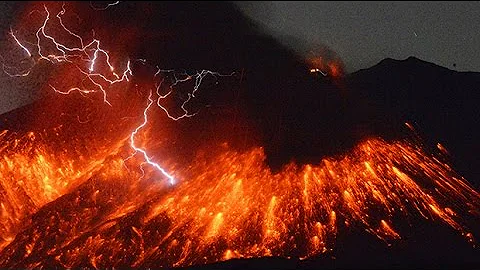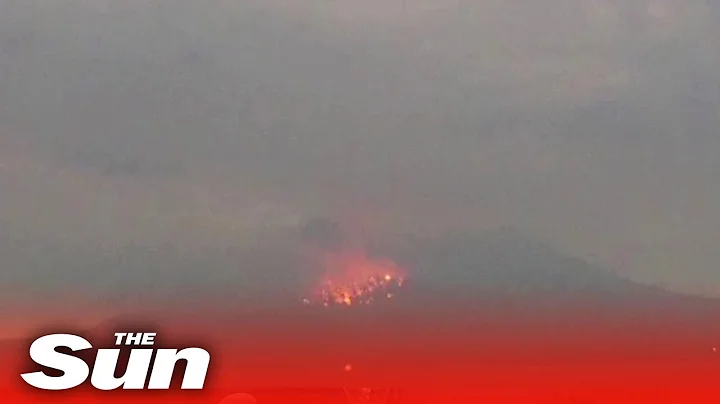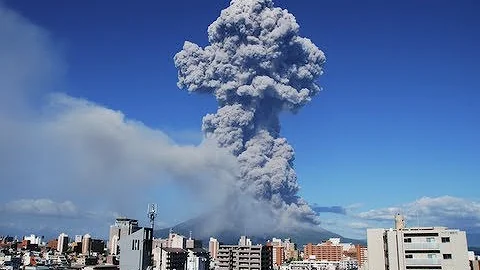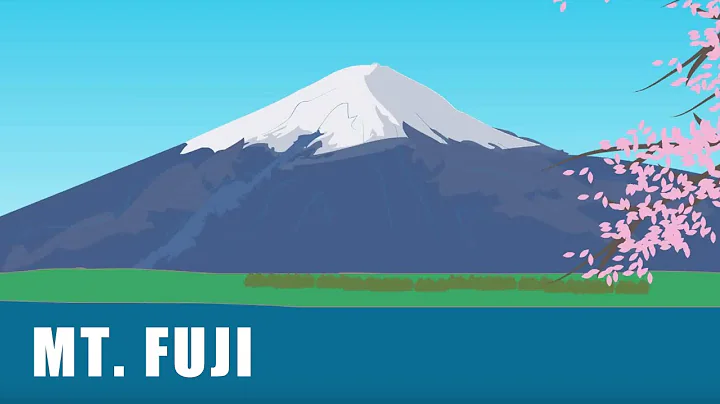On June 27, Japan's Sakurajima volcano erupted, and black cloud-like smoke columns spewed out as high as 1,500 meters. The eruption of Japan's Sakurajima volcano has made many people worry about the situation of Mount Fuji. Also, if Mount Fuji erupts, how much impact will it have on Japan? Will it affect our country?

News screenshots
Sakurajima Volcano is actually a very active volcano, and it also erupted in January 2022. In September 2016, scientists warned that Japan's Sakurajima volcano would erupt on a large scale within 30 years. Researchers from the University of Bristol said Sakurajima volcano on the Japanese island of Kyushu posed a "growing threat". The volcano is 49 kilometers (30 miles) from the Sendai Nuclear Power Plant and also close to Kagoshima, a city of 600,000 people.
Sakurajima's last fatal eruption was in 1914, killing 58 people. The Japanese archipelago, located on the Pacific "Ring of Fire," has more than 100 volcanoes. Sakurajima regularly spews volcanic ash and has many small explosions every year. Therefore, it is closely monitored by relevant Japanese units and is one of two volcanoes at level 3 of Japan's 5-level volcano warning system, which means that people are warned not to approach the volcano. Their research shows that 14 million cubic meters of magma accumulate every year, enough to fill London's Wembley Stadium 3.5 times. The researchers also found that magma was accumulating faster than it could be expelled in regular smaller eruptions, leading them to theorize that a major eruption could occur within the next 30 years. They based these assessments on new methods for studying and modeling volcanic magma chambers.

Will the eruption of Sakurajima volcano in Japan affect Mount Fuji?
Sakurajima volcano is an active volcano located in Kagoshima Prefecture, Kyushu, Japan. It used to be an island and is now a peninsula. Mount Fuji is located on Honshu Island in Japan. It is the highest mountain in Japan, with a height of 3776.24m. The two volcanoes are more than 1,200 kilometers apart, and the connection between volcanoes so far apart is very small. Therefore, there is not much relationship between the two, and Sakurajima volcano also erupts frequently, but it has almost no impact on Mount Fuji.

If Mount Fuji erupts, how much impact will it have on Japan? Will it affect our country?
Volcanic eruptions are one of the most violent factors of change on the earth. Not only can powerful explosive eruptions dramatically alter the land and water tens of kilometers surrounding a volcano, but tiny droplets of sulfuric acid spewed into the stratosphere can temporarily alter our planet's climate. Large explosive volcanic eruptions that inject water vapor, carbon dioxide, sulfur dioxide, hydrogen chloride, hydrogen fluoride, and ash (crushed rock and pumice) into the stratosphere 16-32 kilometers (9.9-19.9 miles) above the Earth's surface high. The most significant effect of these injections comes from the conversion of sulfur dioxide into sulfuric acid, which rapidly condenses in the stratosphere to form fine sulfate aerosols.
And the large amounts of carbon dioxide emitted by volcanoes may cause significant climate impacts. Aerosols increase the Earth's albedo—reflecting solar radiation back into space—and thus cool the Earth's lower atmosphere, or troposphere; however, they also absorb heat radiated from the Earth, thus warming the stratosphere. Several eruptions over the past century have caused Earth's average surface temperature to drop by half a degree (Fahrenheit), lasting one to three years.

Mount Fuji's main crater is 780 meters (2,560 feet) in diameter and 240 meters (790 feet) deep. The diameter of the base is 100-130 meters (330-430 feet). The slope from the crater to a distance of 1.5-2 km (0.93-1.24 mi) is 31°-35°. Beyond this distance, the tilt angle is approximately 27°, which is caused by the increase in slag . It is the second-highest volcano located on an Asian island (after Mount Clinch on Sumatra ) and the seventh-highest island on Earth. Mount Fuji is an active volcano, and its last eruption was in 1707-1708.
A Japanese government panel said any major eruption of Mount Fuji would dump so much ash on the capital Tokyo that its train and highway transportation network would be paralyzed within three hours.Simulations show that even trace amounts of ash from such an eruption would make it impossible for surface trains to operate in Tokyo, 100 kilometers (60 miles) northeast. A few centimeters of ash can clog power plant filters. Visibility will be reduced to zero. An eruption on the scale of Mount Fuji's last eruption could last up to two weeks, which the expert team included in its calculations.

In other words, if Mount Fuji erupts, it will have a great impact on Japan. So will it have any impact on our country? The answer is very limited. Because Mount Fuji in Japan is not very close to our country, and although Mount Fuji is also a relatively large volcano, it is not a super volcano. Therefore, the scale of its eruption is also limited compared to the super volcano . Also, our country is located in the "upwind zone" of Mount Fuji in Japan. The wind blows from west to east, so the volcanic ash produced by the eruption will not "drift" over.
In short, it is the eruption of Sakura volcano in Japan, which has basically no impact on Mount Fuji. And even if Mount Fuji does erupt in the future, its impact on our country will be very limited. That’s it for today. I’m Fire Sect Lord. See you next time. #Japan’s Sakurajima volcano eruption#





















